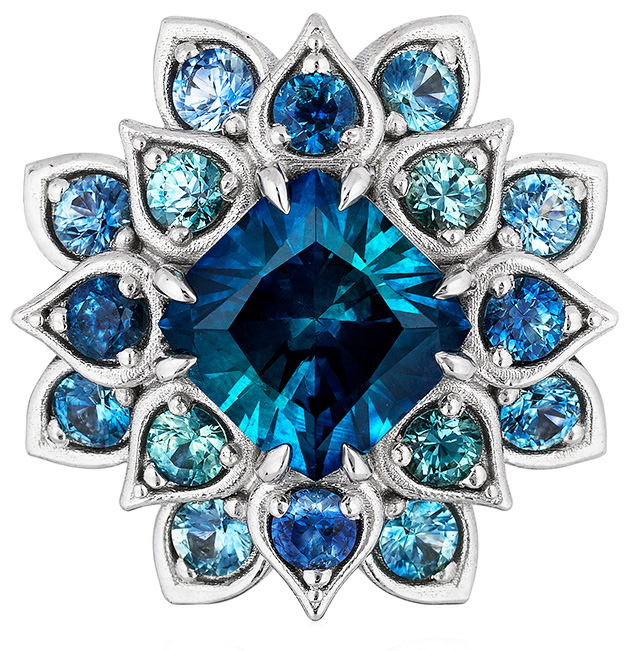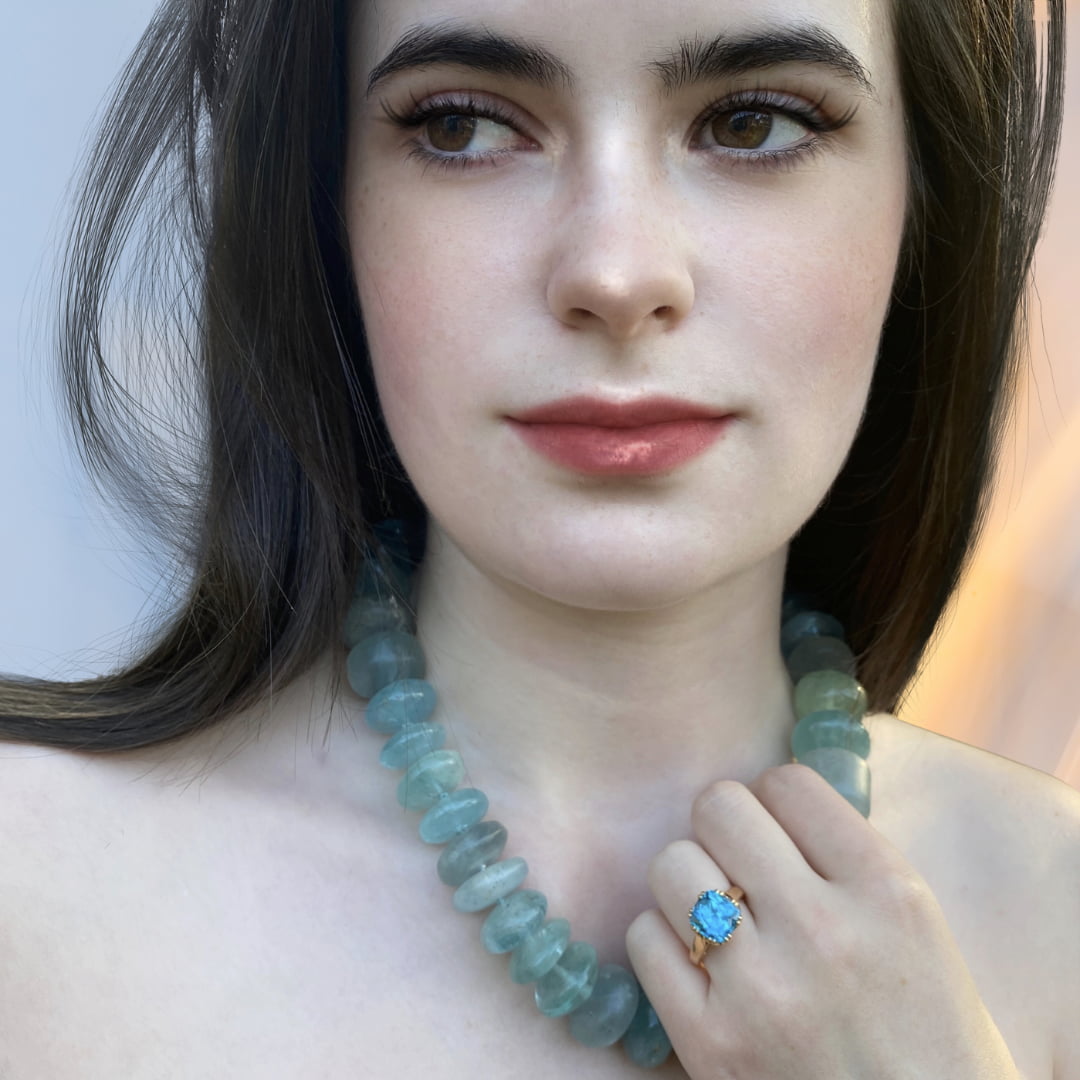
My friend Lisa was in from Amsterdam with bags of gems and jewels she had collected over years of travel. Lisa’s jewel stash was large and varied, the only common denominator amongst the pieces was her good eye and sense of the possible.
Would it be possible to transform bits and bobs from her stash into one significant jewel?
Lisa uses her eye on her travels hunting and gathering cool things from the world’s street markets, out of the way antique dealers, upstairs ateliers and dealer’s offices. She is curious possessor of arcane knowledge and loves the hunt. When I’m going to a new city and want ideas for cool unusual things to do, she’s one of my “go tos.”
By the way, she told me about the multi-media art installation on Van Gogh at Atelier des Lumieres in Paris last fall. Check it out.
The White Blotter Process
When a client brings me her jewels, I start by setting them on a white expanse of paper or toweling. From there, I can group and regroup them into patterns and themes.
When looking through jewels to repurpose, there are always fixes I can make. But the $1,000 question is, “what pieces make sense to spend time, money and focus on?
Will the result be beautiful? Will it carry sentiment? Will it be useful? How do the costs of redesign relate to the tangible value of the piece?
Over a pot of tea, I watched and listened to Lisa’s stories as she pulled her intriguing pieces out and set them on the white blotter. Her face would brighten as she told me the story of how she found each jewel. Tea and talk, then more tea and talk…..it was lovely. A magic circle of Lisa’s treasures began to spread over the white blotter.
What caught my eye was that she had several seemingly disparate native cut, pastel sapphires that she had either pulled from antique settings or purchased unset rolling around in her treasure bag. They were old stones – probably unheated – and they have a different “Old World” aesthetic in their softer hues and the presence of inclusions which would often be heated out in the process of bring them to the modern-day market. They are a bit more esoteric – which is Lisa.
Lining them up to evaluate, I saw that we could create a patterned color chord in symmetrical sizes, once recut to bring out their optimal brilliance.
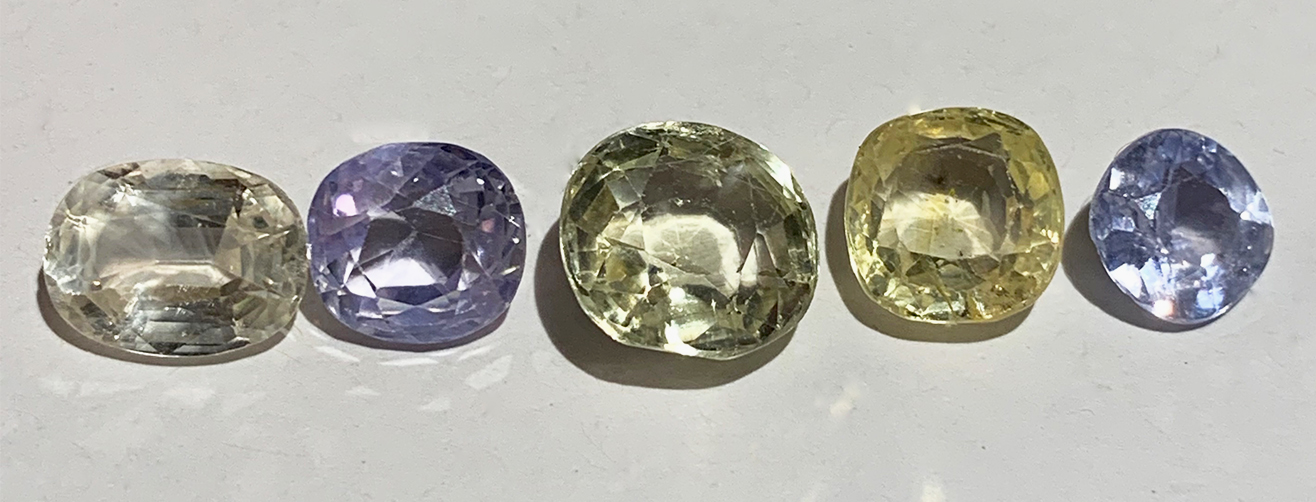
If you are tempted to purchase poorly cut gems with the idea of recutting them to treasure – don’t do it! It’s a gamble that doesn’t always work out – even for those of us who have done it for many decades.
Recutting colored gemstones is nothing like taking a coat to the tailor for some adjustments. We need to consider each gem’s optics, evenness of color, inclusion pattern, weight recovery, value and in this case, we were doing this to five gems that we wanted to work cohesively.
Lisa and I gambled that this suite of sapphire would bloom with a skilled recut. They were shallow but fairly equidimensional, a situation which is often suitable for recut success. We’d have to standardize and bring in the outside “girdle” outline dimensions, close the light-leaking windows in the gems’ bottoms as much as practicable and graduate the sizes.
Look how they turned out!

A bunch of disparate, worn “stones” are now a coherent sapphire suite. Frankly, I didn’t think the stones would recut this large – they turned out better than I imagined.
The two smallest end sapphires have more inclusions giving them a softer velvety light reflection. That is the nature of unheated sapphires, and it adds to the charm and story behind the ring.
Decisions….Decisions
Since the gems turned out larger than anticipated (a good thing), we now had more options:
We could continue with the plan for a five-stone ring – though now with larger stones, the ring would have to have more height on it so all the stones could fit in an arch across her finger. It could be exquisite. And, large….
Or,…we could make a four stone ring and eliminate the center large stone. ….
We could also put a pearl in the middle for a five-stone ring and use the center sapphire for another project……
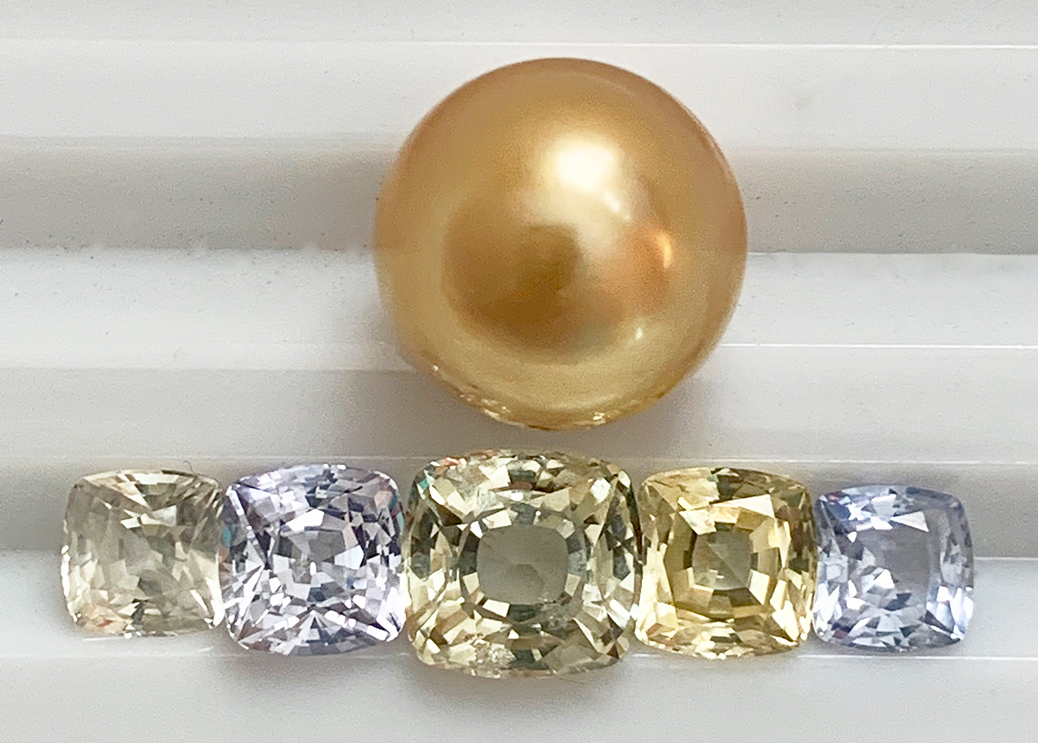
I just wanted to show you how Lisa’s golden pearl looks with all the sapphires –
do you like them together?
Designing the Ring
Usually, I like using odd number of stones in a jewelry piece. I call it “The Law of Odds” as the eye likes to rest at a focal center, which has an even number on each side. With this four-stone ring, we aimed to let the eye find rest in symmetry by designing a flowing ring with symmetry an integral part of its equation.

As you can see from these sketches, we played around with
three- and four-stone ring design options.
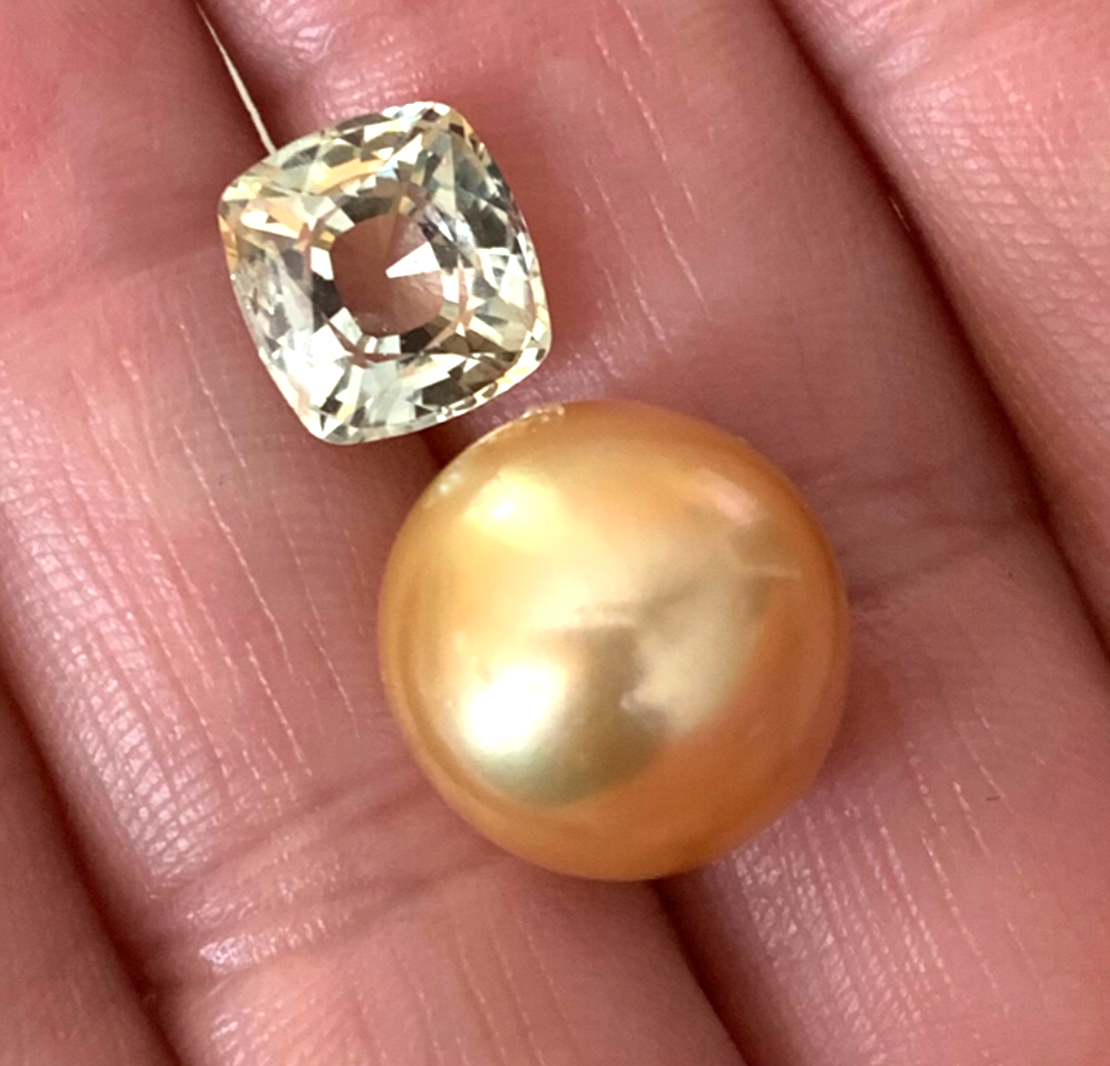
Lisa explained, “The stone and the pearl look really nice together.
I was worried the icy nature of the sapphire would clash
with the warmth of the pearl.
We start with a sketch, but often use CAD (Computer Aided Design) to work out the engineering and aesthetics in different dimensions. This is when we get really picky and collaborate with the aim of making the jewel even better than on paper.
To give you an idea of the process from 2-dimensional paper sketch to 3-dimensional CAD. Look at the first CAD, below.
Edits to the first CAD involved the side gallery view which was supposed to look like a diamond ribbon or garland, but this CAD has it looking like a long, narrow sideways U.
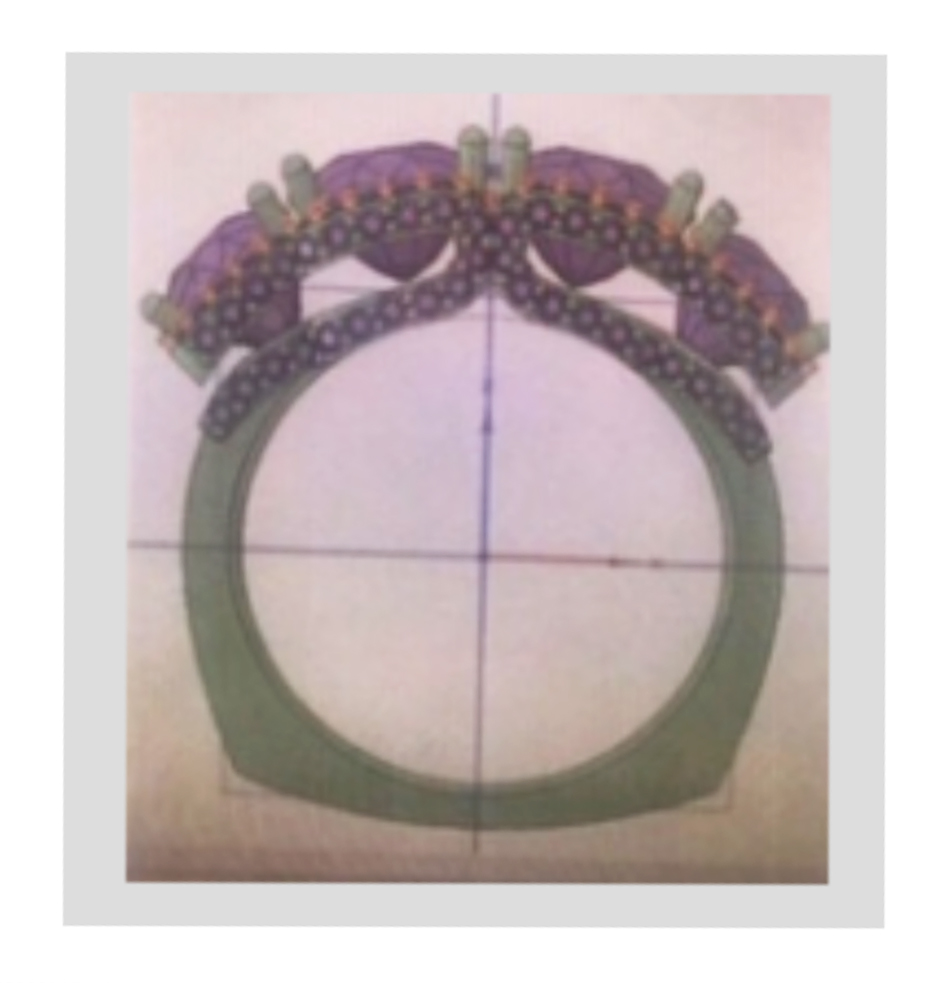
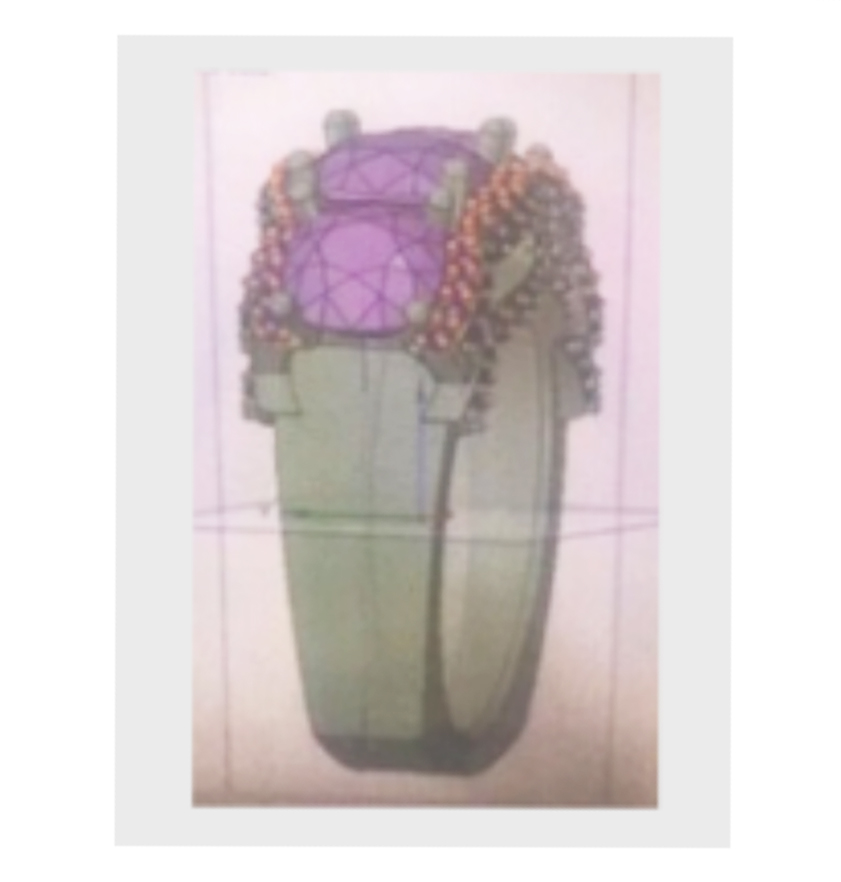
Then there was the matter of the side shank view – awkward to have the diamond garland end abruptly – so we tapered the shank and brought the diamonds around to meet.
See how we solved those design challenges in the second CAD, below:
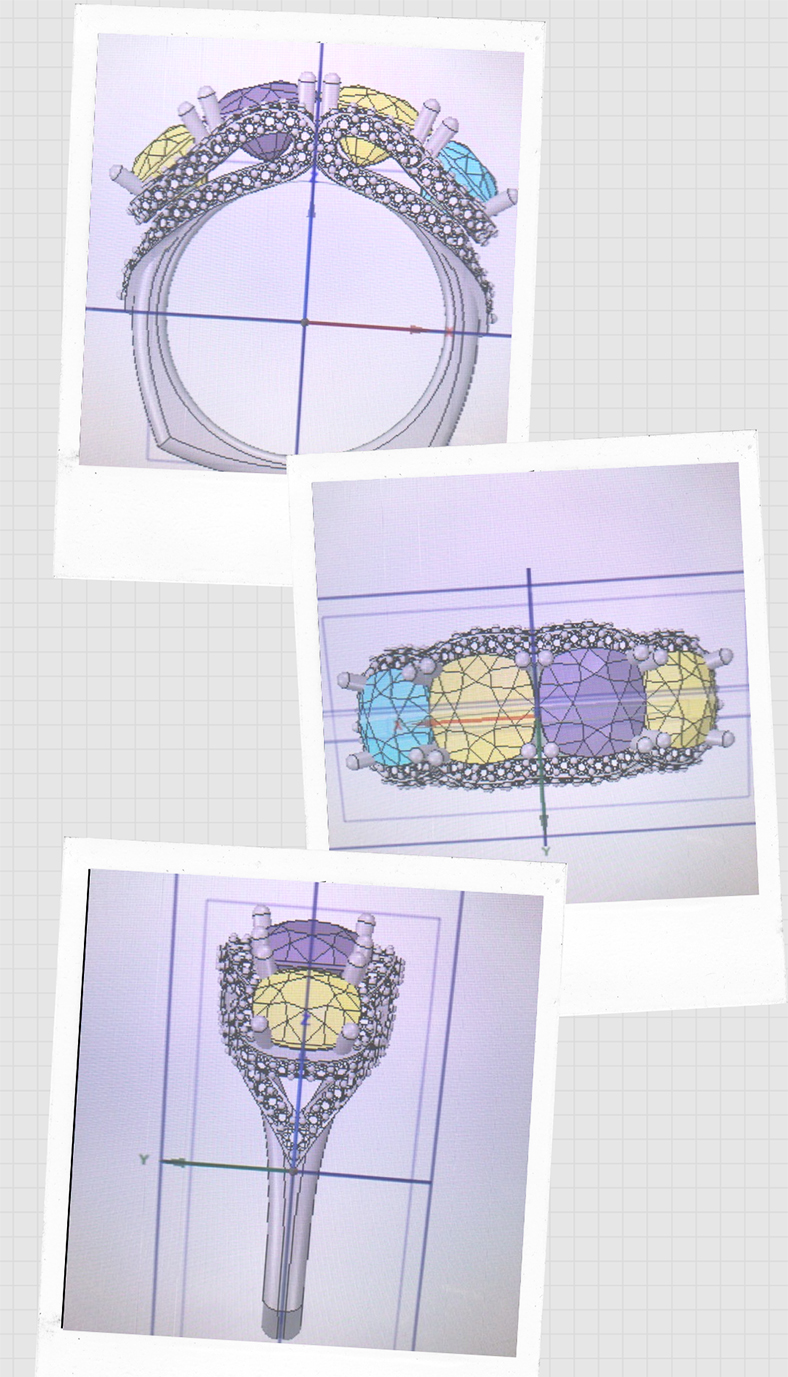
Metal Mettle
Choosing what metal to use is very important and often misunderstood.
We ended up creating the ring in a special “super white” alloy of 18 karat white gold. We recommended white gold because it is very white and hard – meaning it will hold a polish a lot better than platinum. Platinum has tensile strength but gets scratched easily which dulls its finish much more quickly than the white gold. Lisa’s gems were unheated and because of that, they can have a bit of velvety sleepiness. I thought the gems would be better served over time to have the gleaming polish of the white gold next to them instead of platinum’s grayer white and inevitable duller finish.
Voila!

“Long Distance Legacy”
Cynthia Renee Full Custom Design Ring
in 18 karat “super” white gold featuring four sapphires weighing 8.33 carats
wrapped with a ribbon of 150 diamonds total of 1.05 carats.
What did Lisa say?
“Absolutely stunning! The colors are really just lovely… different but they hues and secondary tones work really well together…THANK YOU!! Cynthia, really just wonderful….
I can’t believe how beautiful it turned out. “
